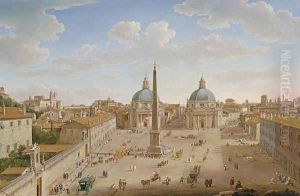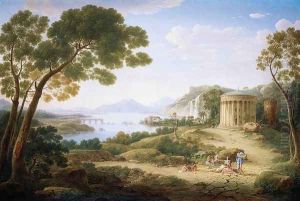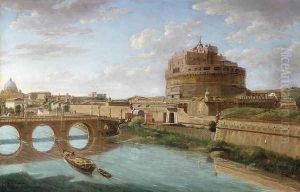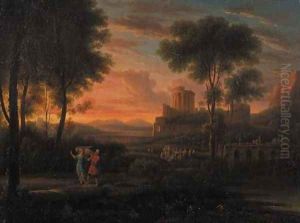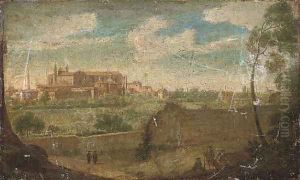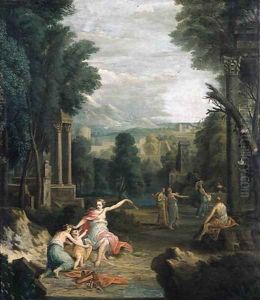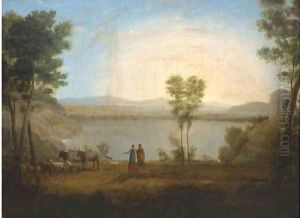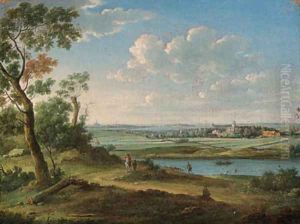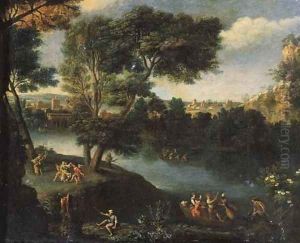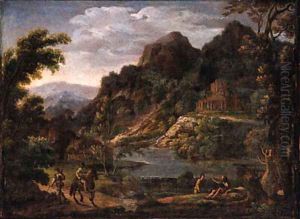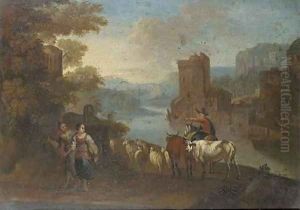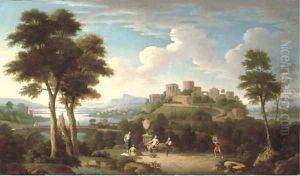Hendrik Frans van Lint (Studio Lo) Paintings
Hendrik Frans van Lint, also known as Studio Lo due to his signature or nickname, was a prominent Flemish landscape and architectural painter during the Baroque period. Born in Antwerp in 1684, van Lint showed an early interest in art, a passion that was likely nurtured within the vibrant artistic community of his hometown. Antwerp, a significant center for art in the 17th century, provided a fertile ground for his artistic development. Early in his career, van Lint moved to Rome, which was a common practice among artists of his time seeking to study the works of the masters and to capture the city's unique light and landscape. Rome served as the backdrop for most of his life and career. There, he became renowned for his ability to depict the Roman countryside, the ancient ruins, and the city's architectural marvels with remarkable accuracy and atmospheric effect.
Van Lint's work is characterized by its meticulous attention to detail, vibrant use of color, and the serene, idyllic landscapes that seemed to transcend the reality of Rome's bustling streets. He was particularly adept at incorporating the soft, Italian light into his paintings, which added a layer of mystique and beauty to his scenes. His landscapes were not just mere representations; they were imbued with a sense of harmony and peace, often featuring shepherds and classical ruins that evoked the pastoral traditions of the Roman Campagna.
Throughout his career, Hendrik Frans van Lint enjoyed considerable success and was highly sought after by patrons, including members of the European nobility and clergy, who admired his ability to capture the essence of the Italian landscape. His works contributed significantly to the Grand Tour's visual culture, as they captured the imagination of European travelers to Italy. Despite his Flemish origins, van Lint became an integral part of the Roman artistic community, blending Flemish attention to detail with the grandeur and light of Italian landscapes.
Van Lint's legacy is that of a master landscape painter who contributed to the evolution of the genre in the 18th century. His works are preserved in several major museums and collections around the world, where they continue to be studied and admired for their beauty and historical value. Hendrik Frans van Lint passed away in Rome in 1763, leaving behind a rich body of work that continues to inspire and captivate art lovers and scholars alike.
